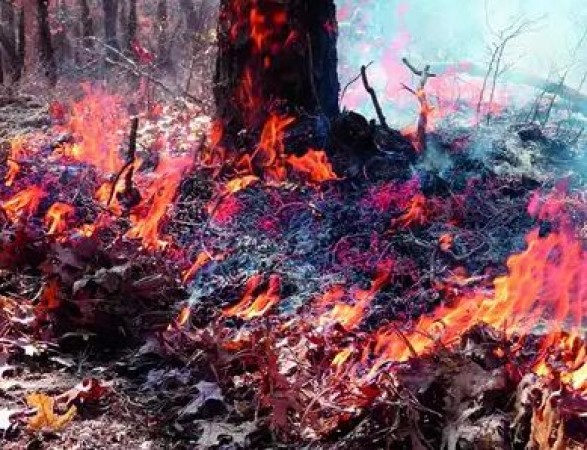
Forests are vital to our planet, offering a sanctuary for wildlife, clean air, and natural beauty. However, not all trees contribute positively to their environment. Some trees, surprisingly, play a significant role in sparking forest fires. One such notorious tree is the Eucalyptus. This article explores the fascinating and hazardous characteristics of the Eucalyptus tree and its impact on forest fires.
Eucalyptus, commonly known as gum trees, are native to Australia and surrounding islands. These tall, evergreen trees are known for their distinctive bark, aromatic leaves, and rapid growth.
Eucalyptus trees thrive in a variety of climates but are particularly abundant in regions with hot, dry summers. Originally from Australia, they have spread globally, found in places like California, South Africa, and the Mediterranean.
Eucalyptus trees have several unique features:
One of the primary reasons Eucalyptus trees are fire hazards is their oil-rich leaves. These oils are highly flammable and can ignite easily, especially in dry conditions.
The shedding bark of Eucalyptus trees creates a layer of dry, combustible material on the forest floor, providing ample fuel for fires.
Eucalyptus trees have adapted to fire-prone environments by developing a unique reproductive strategy. Their seeds are often released in response to heat, ensuring that new trees grow after a fire clears the landscape.
During intense fires, Eucalyptus trees can create firestorms. The volatile oils in the leaves can cause explosions, sending embers flying and spreading the fire rapidly.
Australia has a long history of bushfires, and Eucalyptus trees have played a central role in many of these devastating events. The infamous Black Saturday fires in 2009 were exacerbated by the presence of Eucalyptus.
Beyond Australia, regions like California have also experienced severe wildfires linked to Eucalyptus trees. These trees were introduced to California during the Gold Rush but have since become a fire hazard.
While Eucalyptus forests support some wildlife, the intense fires they can cause often devastate habitats, leading to loss of biodiversity.
Frequent fires can lead to soil degradation, affecting plant growth and water retention in the soil.
Wildfires involving Eucalyptus trees release large amounts of smoke and pollutants, affecting air quality and public health.
Controlled or prescribed burns are a common method used to reduce the amount of flammable material and manage Eucalyptus forests safely.
Regular thinning and pruning of Eucalyptus trees can help reduce the risk of fires by limiting the amount of combustible material.
In some areas, replacing Eucalyptus with native, less flammable species can help mitigate fire risks.
Climate change has led to hotter, drier conditions in many parts of the world, increasing the frequency and intensity of wildfires.
As climates change, the distribution of Eucalyptus trees may expand, potentially increasing fire risks in new areas.
Communities living near Eucalyptus forests often implement fire safety measures, such as creating firebreaks and maintaining clear zones around homes.
Governments may regulate the planting and management of Eucalyptus trees to reduce fire hazards. Policies often include guidelines for spacing, pruning, and controlled burns.
Homeowners and land managers can use fire-resistant landscaping techniques to create defensible spaces around properties, reducing the risk of fire spread.
Technological advancements, such as satellite monitoring and early warning systems, help detect and manage wildfires more effectively.
Educating communities about fire risks and safety measures is crucial in areas prone to wildfires. Programs often focus on preparedness and response strategies.
Researchers continue to study Eucalyptus trees and their role in wildfires, seeking ways to manage these trees more effectively and reduce fire risks.
Innovative solutions, such as genetically modifying Eucalyptus to reduce flammability or developing new fire suppression technologies, are being explored.
Personal stories from individuals who have experienced Eucalyptus-linked fires highlight the human impact of these natural disasters and underscore the importance of effective management.
Firefighters who battle wildfires involving Eucalyptus trees offer valuable insights into the challenges and strategies of managing these dangerous fires.
Eucalyptus trees are a fascinating and valuable part of many ecosystems, but their propensity to fuel wildfires presents significant challenges. Balancing the ecological benefits of Eucalyptus with the need to reduce fire risks requires ongoing research, innovative management techniques, and community engagement. By understanding the unique characteristics of Eucalyptus trees and implementing effective fire management strategies, we can mitigate the dangers they pose and protect our forests for future generations.
National Wine Day: Health Benefits of Wine and Tips for Moderation
World Thyroid Awareness Day: How to Manage Thyroid Health
Why Hydration Is Key to Your Wellness - Know Role of Water in Keeping Your Health